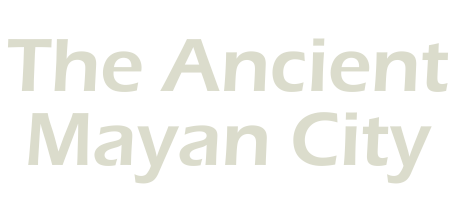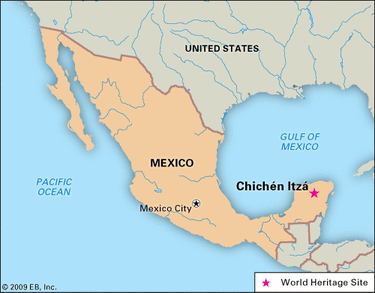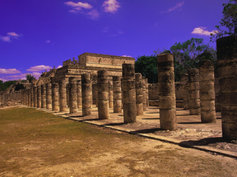
We all know that the Maya were skilled farmers who created sophisticated written language which is the first written language native to that of America,..
Chichen Itza is situated to the eastern part of the Yucatan region in Mexico. The northern part of the region is arid and the rivers run underground in the interior. The two natural sinkholes called the cenotes provide plentiful water throughout the year at Chichen which makes it attractive. It lies between the geographic coordinates 20°40’N latitude and 88°34’W longitude. Also out of the two cenotes, the ‘Cenote Sagrado’ also known as Sacred Well is quite famous.

The structure is so strategically built that the creativity of the Maya is reflected in it. The temple has 365 steps, one for each day of the year. Every side of the temple has 91 steps and the top platform makes the 365th step from all the four sides together. Its ball court measures about 554 feet long and about 231 feet wide and is the largest in the whole of America.

The unique features of Chichen Itza are as follows:
-
It is the largest and most accessible Mayan site, which is about 125km to the west of Cancun and Cozumel. It is also a rugged place of soaring pyramids, massive temples, startling carved columns and do or die fields.
-
The game court is the largest ever found and it displays the rules and details of the sacred game. One of the carving, shows the captain of the losing game beheaded.
-
There is a sacred well that imposes Temple of Warriors the Chac Mool figure and is believed to have served as an altar for sacrifices, and the Nunnery.
It is believed that the Maya founded the Chichen Itza in the 6t century CE. One of the evidences shows that in the 10th century the Chichen Itza was invaded by the foreigners. The Itza however arrived after 200 to 300 years later. These invaders were responsible for the construction of the Castle, El Castillo. The serpent at the top is a symbol of Quetzalcoatl, one of the major deities of the ancient Mesoamerican Pantheon. However, initially it had a jaguar throne studded with jade. The Temple of Jaguars stand on the upper platform which is a mural and it shows the warriors laying siege to a village. Most of these buildings were completed in the early-Post Classic period (900 to 1200 C). When the Spanish entered, about 1450 league of the Mayan supremacy dissolved, which involved the Chichen. Left for long in the Jungle, it remained sacred to the Mayan. It was after the excavation that the site was known and became one of Mexico’s prime archaeological zones.


